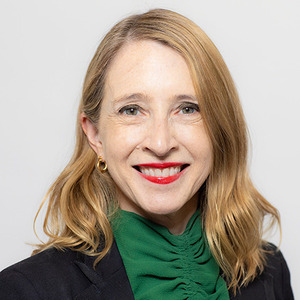
Stephanie Watson
Power List Profile
Professor, Head, Corneal Research Group, The University of Sydney; Head, Corneal Unit, Sydney Eye Hospital, Sydney, Australia
Why did you decide to pursue ophthalmology/your subspecialty?
As a medical student, I decided to pursue a career in ophthalmology. I was fortunate to gain a scholarship to visit Kikuyu Eye clinic in Kenya. There, I found many patients in need of eye care and surgery. Although the available treatments were limited, procedures such as cataract surgery were able to restore sight and had a profoundly positive impact on patient’s lives. There were also many patients with corneal blindness in need of solutions. I was also awarded a scholarship to spend time studying neurology with Professor Newsom-Davis at Oxford University, here I saw the impact that research had on medicine – it was able to improve patient outcomes on a large scale. As a result of these experiences, on completing my ophthalmology training, I chose a career as a clinician scientist working in the field of cornea and external disease.
Is there a particular tool, technological advance, or instrument you would not have been able to live without over the past 10 years?
Access to high quality data is a key tool that has been invaluable over the past 10 years. For example, the Save Sight Keratoconus and Dry Eye Registries, which I lead, have been able to collect data from everyday clinical practice which has enabled clinicians to benchmark their practice and understand disease natural history and treatment outcomes. In my laboratory studies, the ability to analyze outputs in real-time and in detail, such as with in vivo cellular imaging, has generated high quality data that has enabled the discovery of new knowledge. More recently, high quality data has been used to develop artificial intelligence for clinical and research applications; this is revolutionizing how we approach patient care and research methodologies.
What would you like to see change in ophthalmology/your subspecialty over the next 10 years – and why?
Over the next 10 years, I would like to see more effective and safer treatments for patients suffering corneal blindness. Globally, corneal blindness remains a significant cause of vision impairment and vision loss that affects all ages. Corneal trauma is considered a "silent epidemic" and infection still leaves patients without sight due to corneal scarring. There are some treatments but few cures for these corneal diseases and access to available therapies is not universal. Many treatments also may fail over time. Regenerative medicine holds the promise of cures for corneal diseases. The challenge is now to develop curative therapies with regenerative medicine that can be accessed by all and restore vision for life. Moreover, if we can find ways to prevent common causes of corneal blindness, such as by addressing trauma and infection, sight could also be saved across the globe.
Do you have any personal missions for the next 10 years?
My research vision is to significantly improve the lives of patients with corneal disease through developing novel therapies as well as ensuring that available therapies are effective and safe. To fulfil this vision, I plan to lead a laboratory research unit to develop new therapies for corneal disease, bring world-first corneal therapies to the clinic via leading clinical trials, and use analyzed registry data to evaluate treatment outcomes in the real-world. This approach will create a pathway that will enable future corneal therapies to reach the clinic and for their outcomes to be assessed in the real-world to advance patient outcomes.
My personal mission is to enable advances in eye care through training and mentoring the next generation of eye experts – clinicians and researchers. In doing this, another mission is to create and promote workplaces able to support and nurture a diverse workforce. Advantages of diverse next generation eye experts include greater innovation, new perspectives, and the ability to draw from a wider talent pool that will benefit patients and the health care system by improving the outcomes from research and eyecare.
